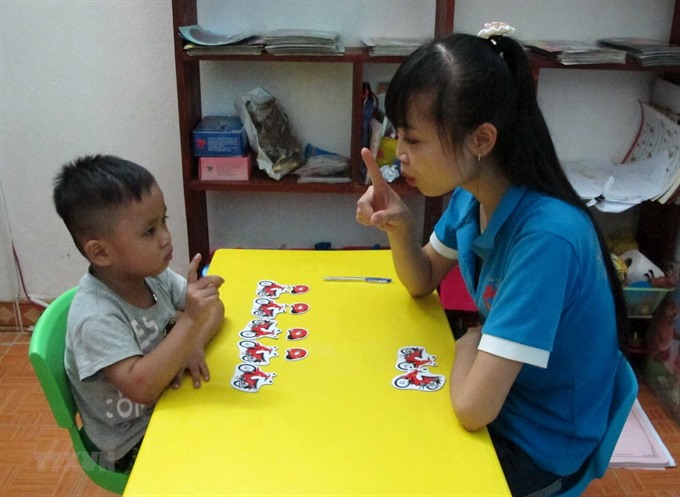 Society
Society

A group of experts is attempting to develop a standard guideline to support the rehabilitation of children with autism in Việt Nam.
 |
| A child with autism is learning how to count. — VNA/VNS Photo Hải Yến |
HÀ NỘI — A group of experts is attempting to develop guidelines to support the rehabilitation of children with autism.
The information was revealed by the National Fund for Vietnamese Children (NFVC) at a conference in Hà Nội on Tuesday.
Although there are about 200,000 people with autism in Việt Nam, there has not been an official set of documents providing instructions on methods of rehabilitation, according to Nguyễn Thị Hà, Deputy Minister of Labour, Invalids and Social Affairs.
“Each family and parent has a different way of teaching their autistic children depending on their financial situations,” she said.
“Parents in big cities often don’t have time for their children and rely on schools or domestic helpers to provide therapy.
“But even schools have different methods of dealing with these children,” she said. “So it is of utmost necessity that we have a standardised guideline on how to work with them.”
Statistics from the NFVC show there are 49 different sets of materials often used in therapy in 13 major cities like Hà Nội, Hải Phòng, HCM City and provinces such as Nghệ An, Thừa Thiên-Huế and Đà Nẵng.
However, their quality and scientific credibility have not been verified.
The guideline is being written and published in two versions, one for educators and one for parents, according to Hoàng Văn Tiến, director of NFVC.
It will include articles, images, videos, and sources of reference that provide people with a sound understanding of the disorder, as well as intervention methods, he said.
It is one of the five objectives of a five-year project on raising awareness on autism among Vietnamese children proposed by NFVC, carried out in 2018-22.
Once it has been published, it will be used to train 100 key officers, 10,000 parents and caregivers, and 10,000 teachers and personnel that deal with children with autism. About 4,000 children with autism will benefit from this knowledge dissemination effort. — VNS




